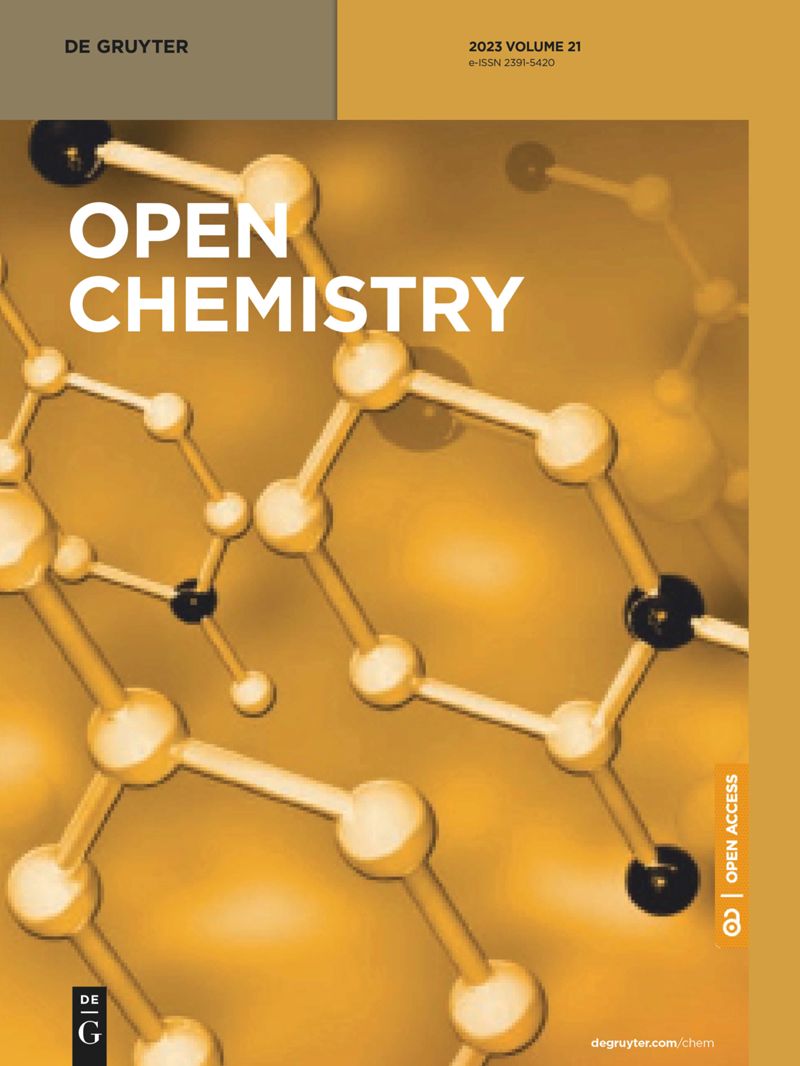用Pistacia khinjuk叶水提取物绿色配制纳米铜颗粒:引入一种治疗前列腺癌的新型化疗药物
IF 1.9
4区 化学
Q3 CHEMISTRY, MULTIDISCIPLINARY
引用次数: 0
摘要
前列腺癌是一种以严重临床症状为特征的癌症。在化疗药物领域发现一种新型前列腺癌补充剂或药物具有重要价值。我们的研究涉及用Pistacia khinjuk 叶提取物合成铜纳米粒子(CuNPs),以探索其潜在的抗前列腺癌、细胞毒性和抗氧化特性。研究人员通过 TEM、紫外可见分光光度法、FE-SEM 和 FTIR 对绿色配方 CuNPs 进行了表征。FE-SEM和TEM结果表明,CuNPs呈球形结构,大小为10-70 nm。为了检测抗氧化剂的有效性,我们进行了 DPPH 试验。在 215 µg/mL 的浓度下,CuNPs 能够抑制 50% 的 DPPH。为了评估 CuNPs 的抗前列腺癌特性,对 NCI-H660、DU 145、LNCaP 克隆 FGC 和 LNCaP 克隆 FGC-Luc2 细胞进行了 MTT 试验。结果表明,CuNPs 在抑制前列腺癌生长方面效果显著,而对正常细胞的毒性则微乎其微。CuNPs 对 LNCaP 克隆 FGC 细胞系的抗前列腺癌效果最强。CuNPs 对 NCI-H660、DU 145、LNCaP 克隆 FGC 和 LNCaP 克隆 FGC-Luc2 前列腺癌细胞的 IC50 分别为 322、365、247 和 273。本研究发现,含有Pistacia khinjuk 的铜纳米粒子具有显著的抗前列腺癌特性,并具有出色的抗氧化潜力。本文章由计算机程序翻译,如有差异,请以英文原文为准。
Green formulation of copper nanoparticles by Pistacia khinjuk leaf aqueous extract: Introducing a novel chemotherapeutic drug for the treatment of prostate cancer
Prostate cancer is a cancer prevalent form characterized by serious clinical symptoms. The discovery of a novel supplement or medication for prostate cancer within the realm of chemotherapeutic drugs holds significant value. Our research involved the synthesis of copper nanoparticles (CuNPs) infused with Pistacia khinjuk leaf extract to explore their potential anti-prostate cancer, cytotoxic, and antioxidant properties. The green-formulated CuNPs were characterized by TEM, UV-Vis spectrophotometry, FE-SEM, FTIR. The FE-SEM and TEM findings prove the spherical structure with a size of 10–70 nm. The DPPH assay was carried out to examine the effectiveness of antioxidants. CuNPs exhibited the ability to inhibit 50% of DPPH at 215 µg/mL. To assess the anti-prostate cancer properties of CuNPs, an MTT assay was performed on NCI-H660, DU 145, LNCaP clone FGC, and LNCaP clone FGC-Luc2 cells. CuNPs exhibited remarkable efficacy in inhibiting prostate cancer growth, while demonstrating negligible toxicity towards normal cells. The LNCaP clone FGC cell line displayed the most potent anti-prostate cancer effects of CuNPs. IC50 of CuNPs was 322, 365, 247, and 273 on NCI-H660, DU 145, LNCaP clone FGC, and LNCaP clone FGC-Luc2 prostate cancer cells. CuNPs containing Pistacia khinjuk were found to possess noteworthy anti-prostate carcinoma characteristics and presented excellent antioxidant potentials, as highlighted by this study.
求助全文
通过发布文献求助,成功后即可免费获取论文全文。
去求助
来源期刊

Open Chemistry
CHEMISTRY, MULTIDISCIPLINARY-
CiteScore
3.80
自引率
4.30%
发文量
90
审稿时长
6 weeks
期刊介绍:
Open Chemistry is a peer-reviewed, open access journal that publishes original research, reviews and short communications in the fields of chemistry in an ongoing way. The central goal is to provide a hub for researchers working across all subjects to present their discoveries, and to be a forum for the discussion of the important issues in the field. The journal is the premier source for cutting edge research in fundamental chemistry and it provides high quality peer review services for its authors across the world. Moreover, it allows for libraries everywhere to avoid subscribing to multiple local publications, and to receive instead all the necessary chemistry research from a single source available to the entire scientific community.
 求助内容:
求助内容: 应助结果提醒方式:
应助结果提醒方式:


